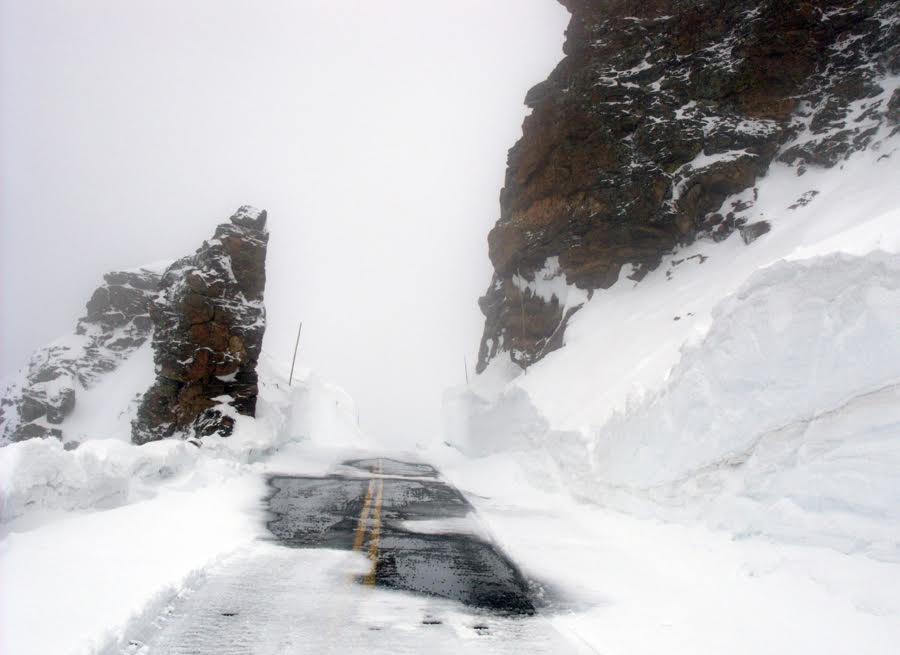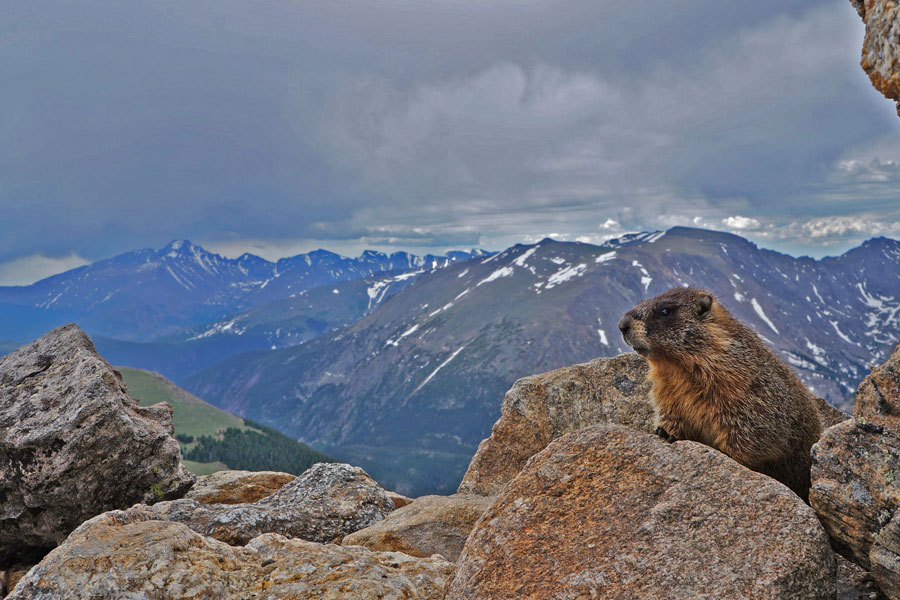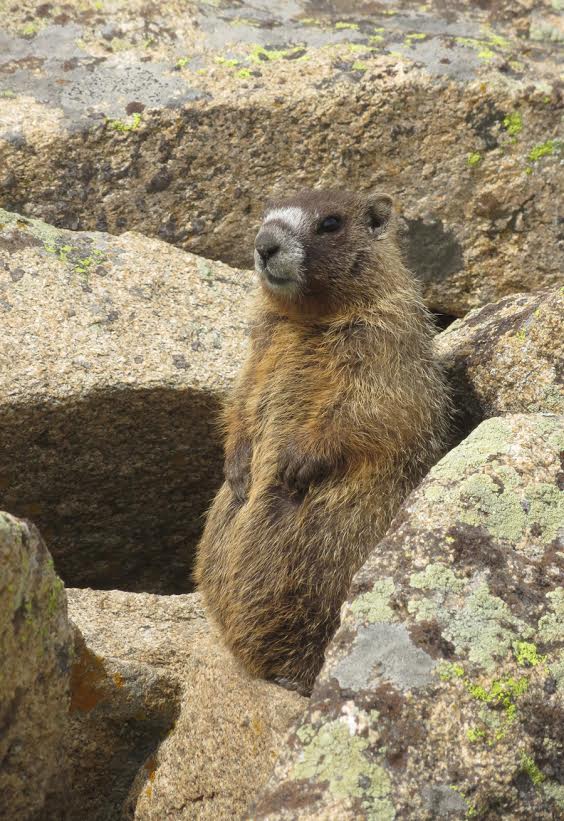Have you ever experienced winds up to 100 miles per hour, felt temperatures below zero, or known what it’s like to be under more than 25 feet of snow? The alpine tundra has! This unique ecosystem comprises a third of Rocky Mountain National Park’s landscape. Due to its extreme temperatures and weather conditions, it is home to a variety of specialized plants and animals.
 An example of the extreme conditions the tundra faces during the winter months in the Rock Cut area. NPS photo.
An example of the extreme conditions the tundra faces during the winter months in the Rock Cut area. NPS photo.
Reaching 12,183 feet above sea level, Trail Ridge Road makes it possible for humans to experience these extremes. For about 80 years, curious visitors have ventured up to Rock Cut, and since this time, visitation has continued to grow. Today, over 4 million people visit the park, and still there are many more that don’t get the opportunity to experience this rich ecosystem.
![]() In addition to more visitors exploring the park each year, climate is also changing the tundra environment. Temperatures are increasing; timing of snow accumulation and melt is changing; and hibernation cycles of alpine animals are being altered. Most of these changes are due to climate change, making it all the more important to share an understanding of this place, in order to better understand how to take care of it.
In addition to more visitors exploring the park each year, climate is also changing the tundra environment. Temperatures are increasing; timing of snow accumulation and melt is changing; and hibernation cycles of alpine animals are being altered. Most of these changes are due to climate change, making it all the more important to share an understanding of this place, in order to better understand how to take care of it.
![]() In order to communicate the unique ecology of this landscape, and to track changes within the environment, we decided to install a camera in the alpine tundra ecosystem. This camera, different from the other cameras within the park, has a special focus. It is designed to better view and understand the yellow-bellied marmot, a popular alpine dweller. We chose to place the camera in the Rock Cut area because a larger and more visible population lives in there.
In order to communicate the unique ecology of this landscape, and to track changes within the environment, we decided to install a camera in the alpine tundra ecosystem. This camera, different from the other cameras within the park, has a special focus. It is designed to better view and understand the yellow-bellied marmot, a popular alpine dweller. We chose to place the camera in the Rock Cut area because a larger and more visible population lives in there.

A marmot in its natural habitat. NPS photo by Chelsea Hernandez.
Also known as whistle pigs, yellow-bellied marmots have distinct warning calls for communication that you might hear when visiting the alpine tundra. Keep your eyes peeled on rocky talus slopes, as this is typical marmot habitat. You have a better chance of seeing marmots in the summer because they are dead asleep during winter. As a true hibernator marmots sleep for 8-9 months of the year, breathing only once every 3-6 minutes, and their heart beating only once a minute.
Because of their distinctive hibernating habits, their cute fuzziness, and the lack of in-depth studies in RMNP, marmots were chosen as a starting point to communicate the goals of this new webcam project. From this point we can continue to track the phenology (the timing of seasonal events, such as emergence from hibernation) of the yellow-bellied marmot to serve as an indicator of changes in the alpine ecosystem. We also hope to increase public awareness of the alpine ecosystem and the species that rely on it, and pilot a digital citizen project that engages youth. Look out for more information about the Marmot Cam project soon!

The yellow-bellied marmot (Marmota flaviventris). NPS photo by Michele Bratschun
